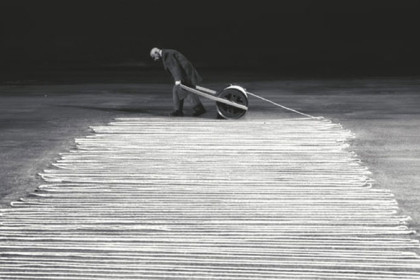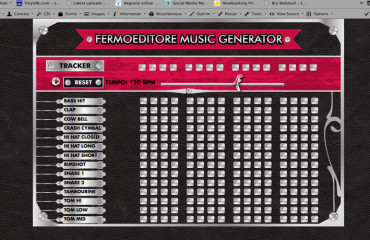
I was in the bookshop, and rather lazily I was looking at a shelf of photo books. I didn’t find anything that was particularly interesting. All of a sudden, I saw it. It was there, small and black, rather anonymous. It definitely intrigued me. I took it, opened it and started to browse it. This is how I got lost in the world of Mister G
Mister G. is Gilbert Garcin, from Marseille, class 1929.
Garcin is not exactly a photographer in the usual sense of the term. For most of his life, he did everything else and then, only after retirement, he found photography as a means of expression, which allowed him to achieve international prominence in only a few years. Mister G. is also the title of his latest book: a fine collection of his works, launched at the end of 2011.
His photographic works are individual works; each image has a precise title, which also provides the reading key. In his work, Garcin decided to renounce the outside world and, on the contrary, give life to a non-existent and unreal world, inhabited by a unique character: “Mr. Nobody”, a man without a name and without a history in which each of us finds his alter ego: an elderly man with rather anonymous clothing, who is lonely and often lost in his thoughts. Often photographed from behind, with his hands crossed behind his back, or photographed to the side, intent to perform improbable actions.
Garcin’s “Mr. Nobody” is an important hero who is given the role of impersonating metaphors, allegories and paradoxes in that absurd theatre that we call the human existence. Like a modern Wandering Knight without a name who is always ready to clash/confront complexes, insecurities, fears that are more or less atavistic, and the other ups and downs of life.
Garcin’s images are full of cultural references and cultural similarities; which are often obvious. The strongest combination is surely linked to surrealism: not a twisted surrealism like Dalí, but the more “polished” surrealism of Magritte. It is often Garcin who creates veritable reinterpretations of art works and, when this happens, we find Klee or Frank Kline. There is not a shortage of references to literature: from subtle satire by Voltaire to the Existentialism of Sartre or Camus; and it is precisely from Camus, borrowing the finale of his essay “The myth of Sisyphus” that Garcin pays tribute to one of his most important works,” We must imagine Sisyphus happy”(1996).
But, do not define Garcin’s message as sad and sombre, on the contrary, it is extremely fun because it is crated with intelligence and acute and refined irony. After all, it is not being serious that we can afford to find ourselves actors and villains of our most wretched made-in-scene, even if dramatic and potentially aberrant.
But maybe this is the beauty of being human.
Images: © Gilbert Garcin
 English
English  Italiano
Italiano 



